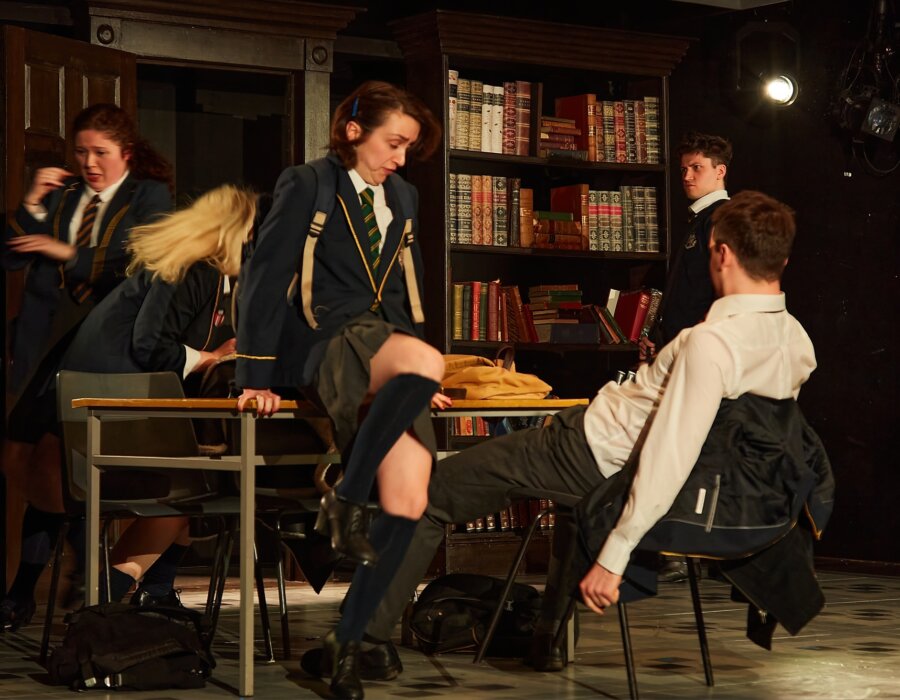
The Lir Academy's Theatre Greenbook Production 2024: Punk Rock by Simon Stephens
Our Acting Sustainability Manager (and Lighting Designer tutor) Sinead Wallace reflects on the creation of the first Theatre Greenbook production in Ireland at The Lir Academy.
This was the year where The Lir Academy at Trinity College Dublin chose to consider sustainability in making our in-house productions.
As part of our Sustainability Plan and Action Plan launched in September, we committed to making Show Four in March 2024 our first Theatre Green Book show. The Theatre Green Book was developed in the UK in 2020 and it's essentially a guidebook to how we make theatre with less waste, taking more responsibility for our impact on the environment.
The show chosen was Punk Rock by Simon Stephens. It was directed by Tom Creed with Set Design by Paul O'Mahony, Costume Design by Catherine Fay, Lighting Design by Stephen Dodd and Sound Design by Ivan Birthistle. The cast and crews were made up of our undergraduate students.
It was a stellar team to put together for the show and we were really excited to begin the design process just before Christmas 2023. Making a show to Theatre Green Book Baseline standard was different from our normal process of designing the show, costing the show and building the show. We committed to ensure that 50% of everything going into the show was reused or recycled or upcycled and that 65% of everything would have a life afterward. I worked as on this process as our Sustainability Champion, so my job was to advise on all things sustainability in terms of materials, sourcing and making choices. It was then the tutors, creatives and students involved who took on the challenge of realising this and finding their own methods and resources to achieve our targets.
Back at the beginning of every process is the White Card, which is everyone's first look at the design. For Green Book shows, it is renamed as the Green Card and the design is reviewed in sustainability terms. Not only were we considering where the materials would come from, but we also had to consider where the materials would go afterward.
The materials for the set were sourced primarily from other theatres that had elements in storage. For example, the roof material (see images below) came from a set in the Abbey in 2019 - I knew it was there because I worked on the show - more materials came from The Gate Theatre and more materials still came from another small touring show designed by a graduate student which was about to be skipped. This sourcing of materials through our own networks meant that we could not only afford what was quite a large set on a relatively small budget, but we could also minimise the amount of raw materials required - requiring less money but more time!
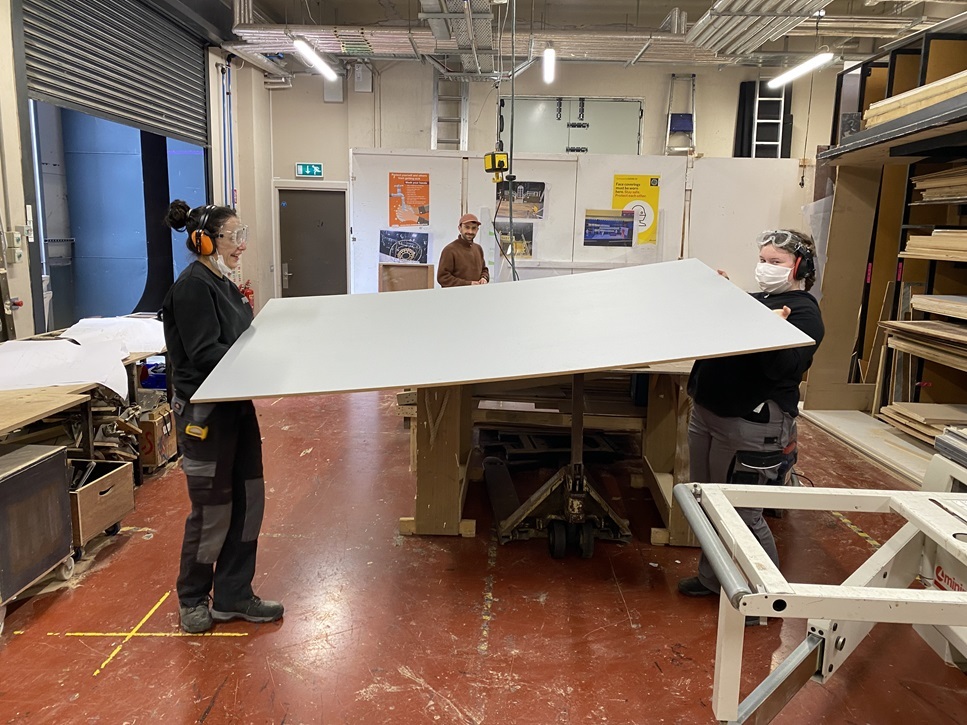
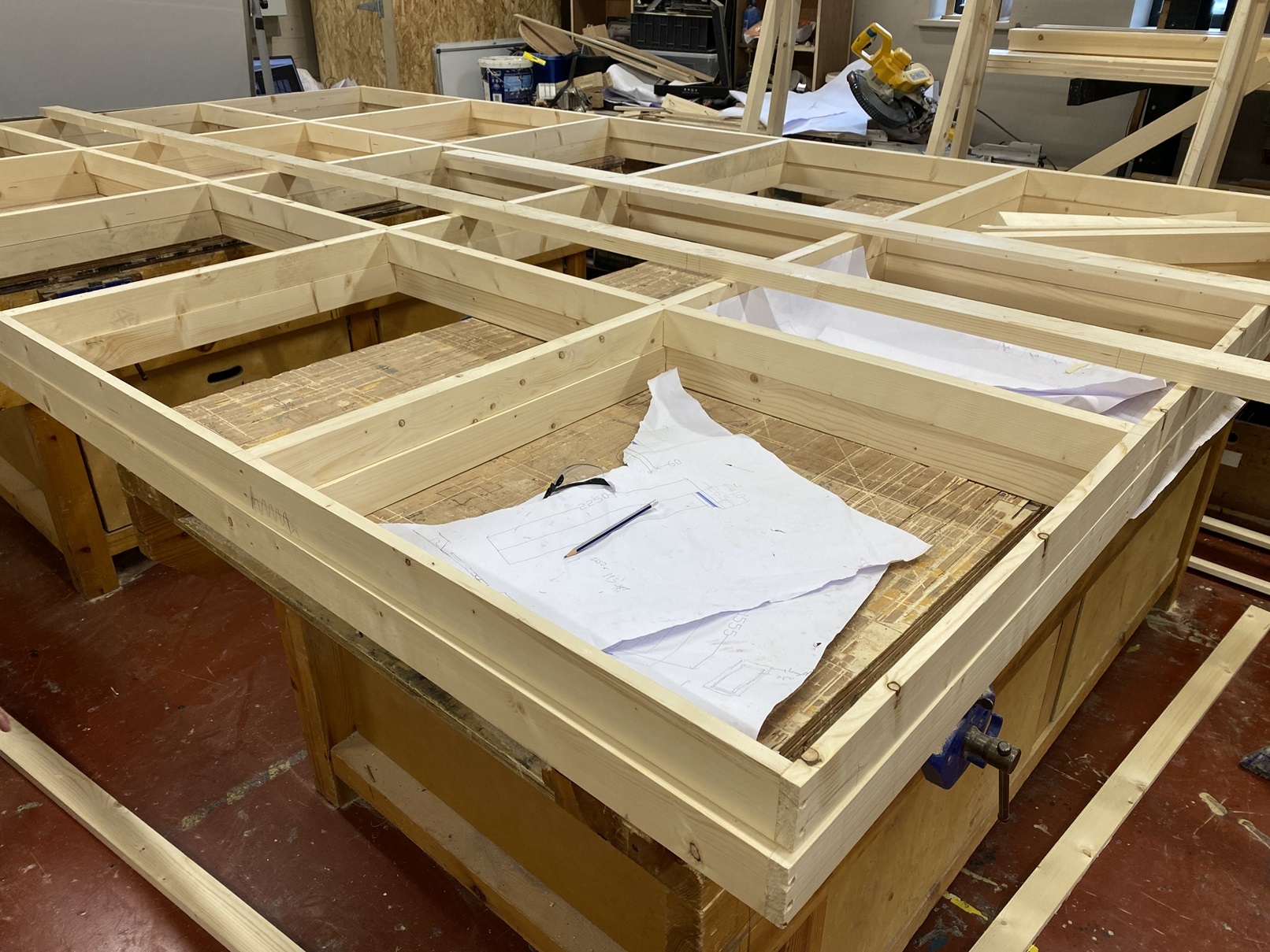
Usually, our work ends for each production with the 'Get Out' on the final night after the show - a skip is delivered outside the theatre and the majority of the set goes in the skip. This time, there was no skip! Sheet materials like the flooring were stored for reuse, the roof was disassembled, the floor structure was returned and new homes were found for the many bookcases!
We exceeded our green targets in every department and that was a credit to all of the amazing students involved. The second-year SMTT students who worked as Heads of Department showed an extreme commitment to the principles outlined in the Theatre Green Book and worked tirelessly to ensure we met those targets.
Set, costume, and props were all sourced from local shops, local theatres, former theatre productions, and from within the walls of The Lir Academy. Everyone shopped in real life instead of shopping online to cut down on deliveries in diesel vans. The students even managed to mostly avoid single-use items and ordering from large online marketplaces – phenomenal!
The whole idea behind doing a Theatre Green Book show was that we would move away from an unsustainable model of work and towards something more in keeping with the Circular Economy. The show was not only brilliant in terms of performances and visuals, it was an exercise in how we could make something look really slick without costing the earth – thanks to the backstage departments who went beyond the call!
What this show did for The Lir Academy, students and staff, was change the mindset around how we make work, how we make decisions, and to empower us to do better. It was an immense learning exercise for all of us. Stay tuned, we have great plans for 2024-2025!
From our assessment on our sustainable mode of production for Punk Rock:
We committed to ensure that 50% of everything going into the show was reused or recycled or upcycled and that 65% of everything would have a life afterward.
The result:
Set & Scenic - 65% of the materials used had a previous life and 98% are being repurposed
Props - 87% of them had a previous life, 91% are being repurposed
Costume - 57% of costumes had a previous life, 100% are being repurposed
Tech - 98% of tech used had a previous life, 100% went on to be repurposed
See some images from the show below, the fabrication and on set, including these bookshelves that were made out of reclaimed wood and painted using upcycled paint, the flooring and the roof, pictured in construction above.
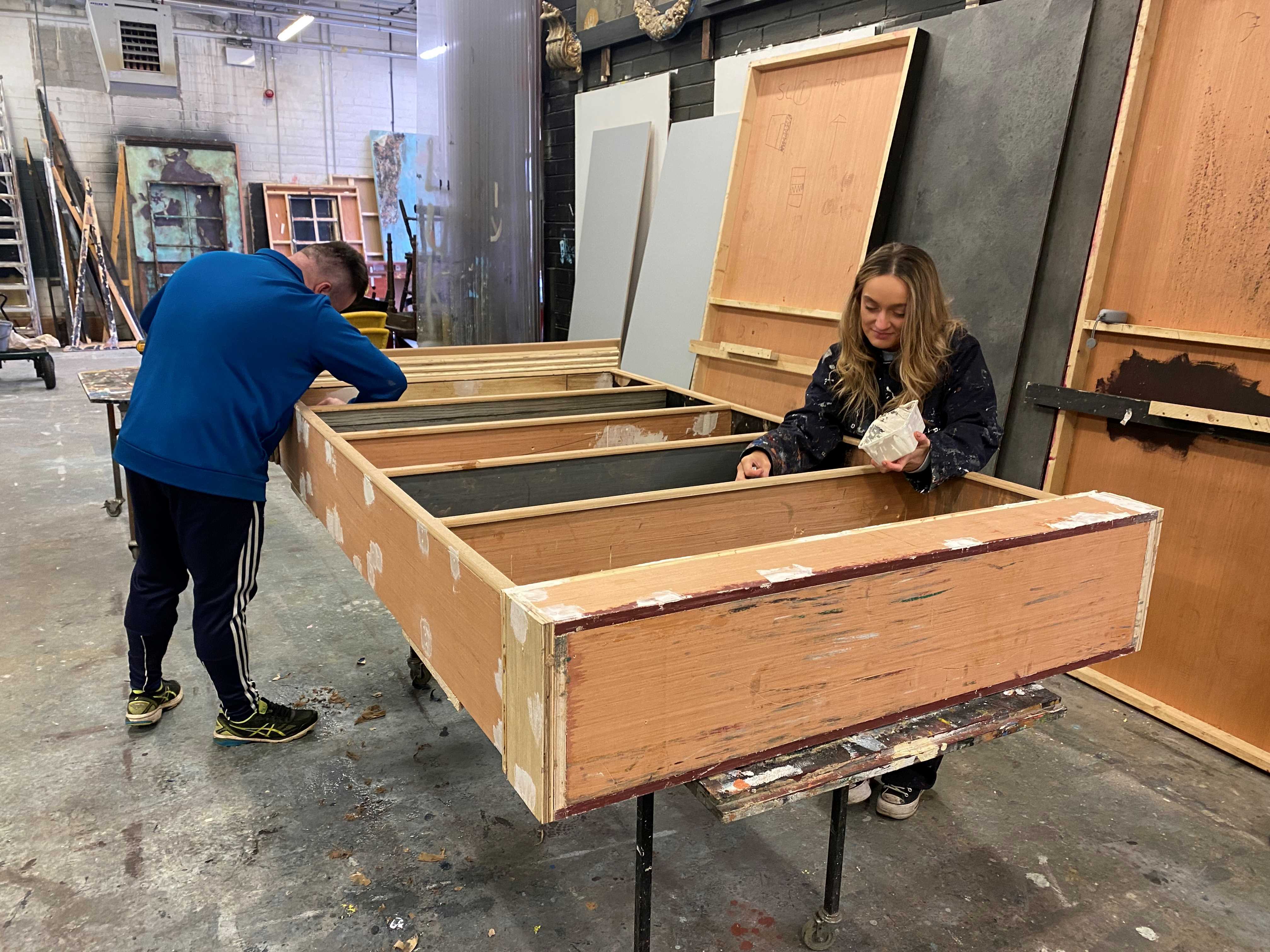
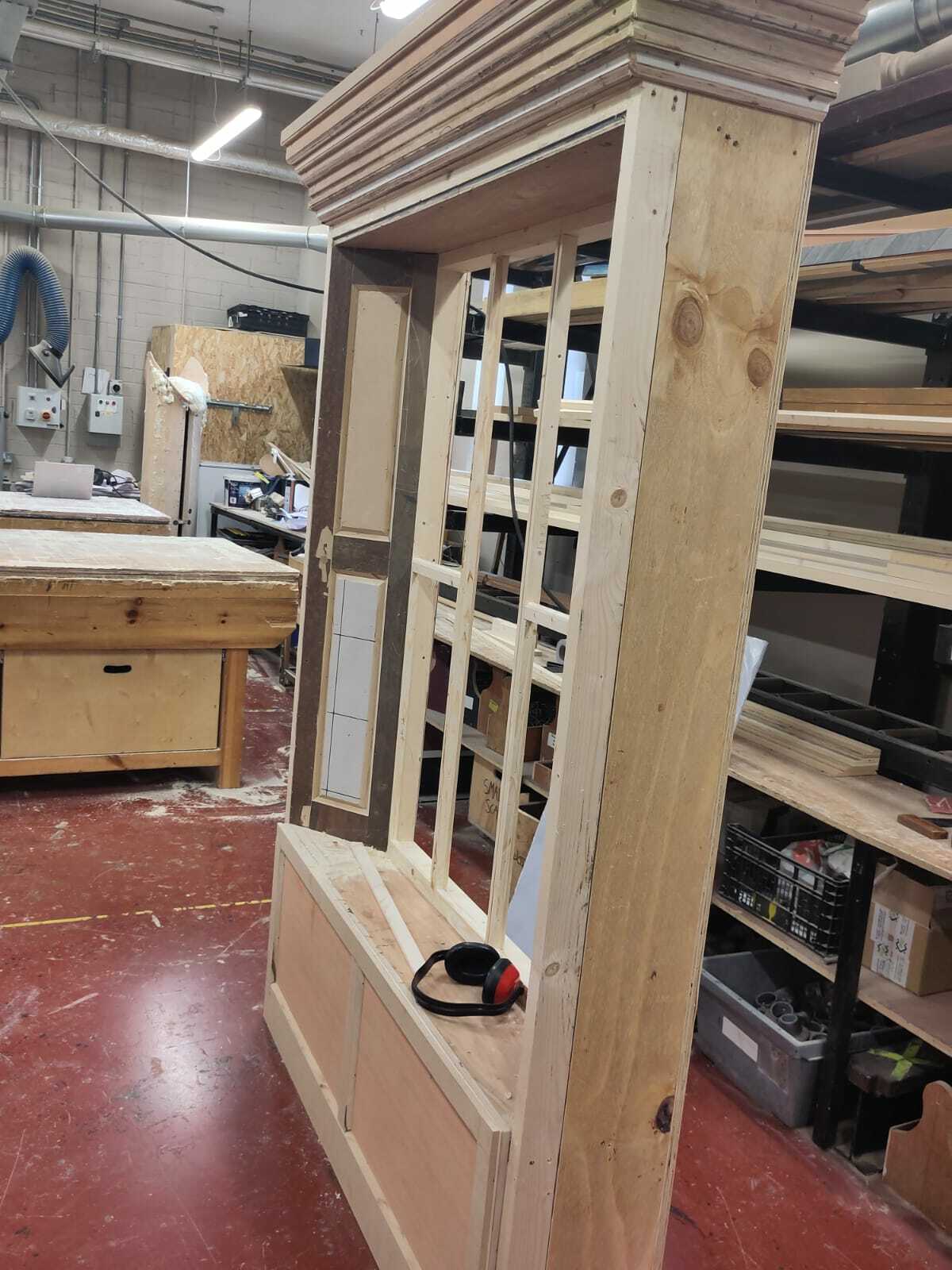
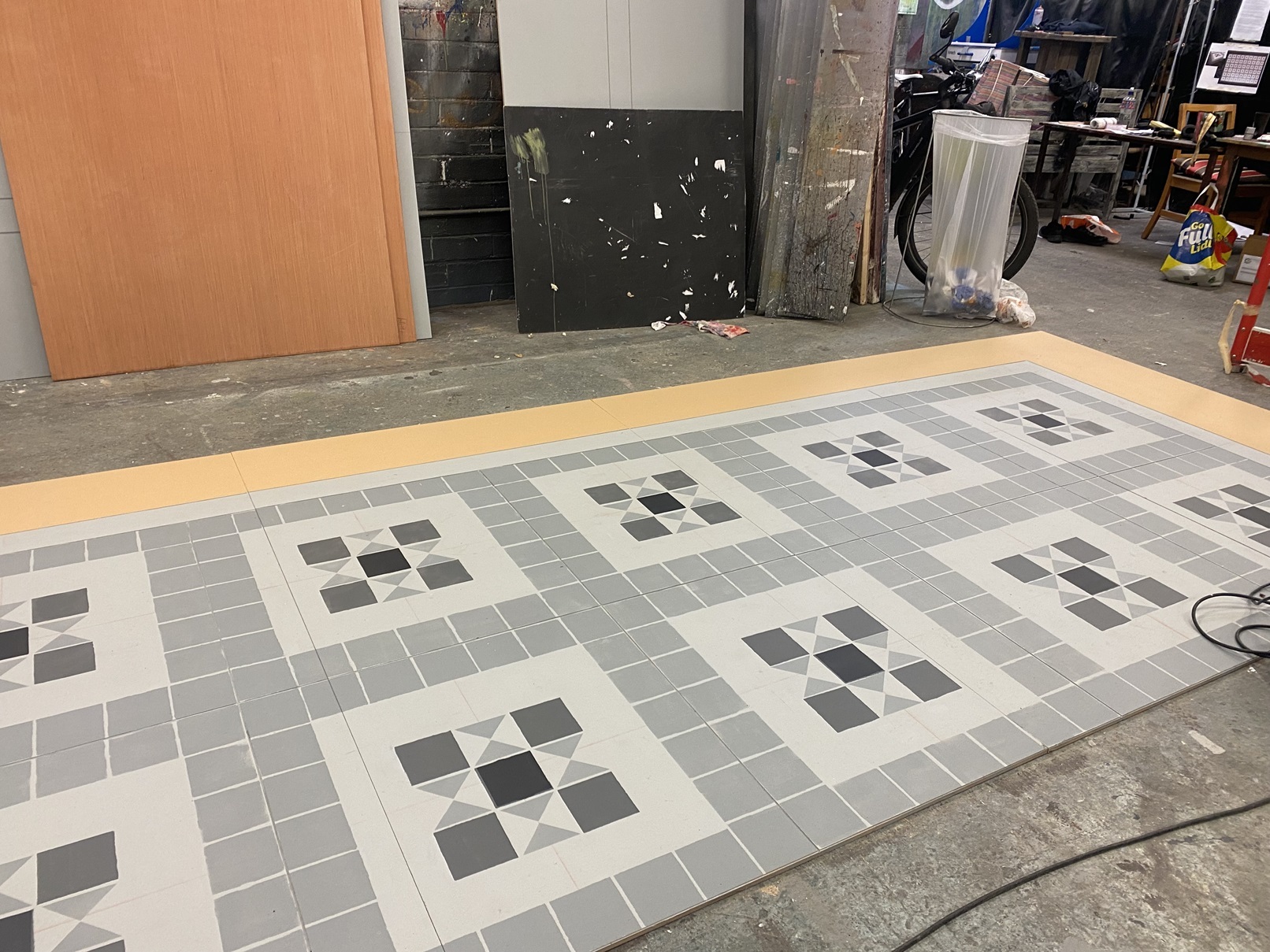
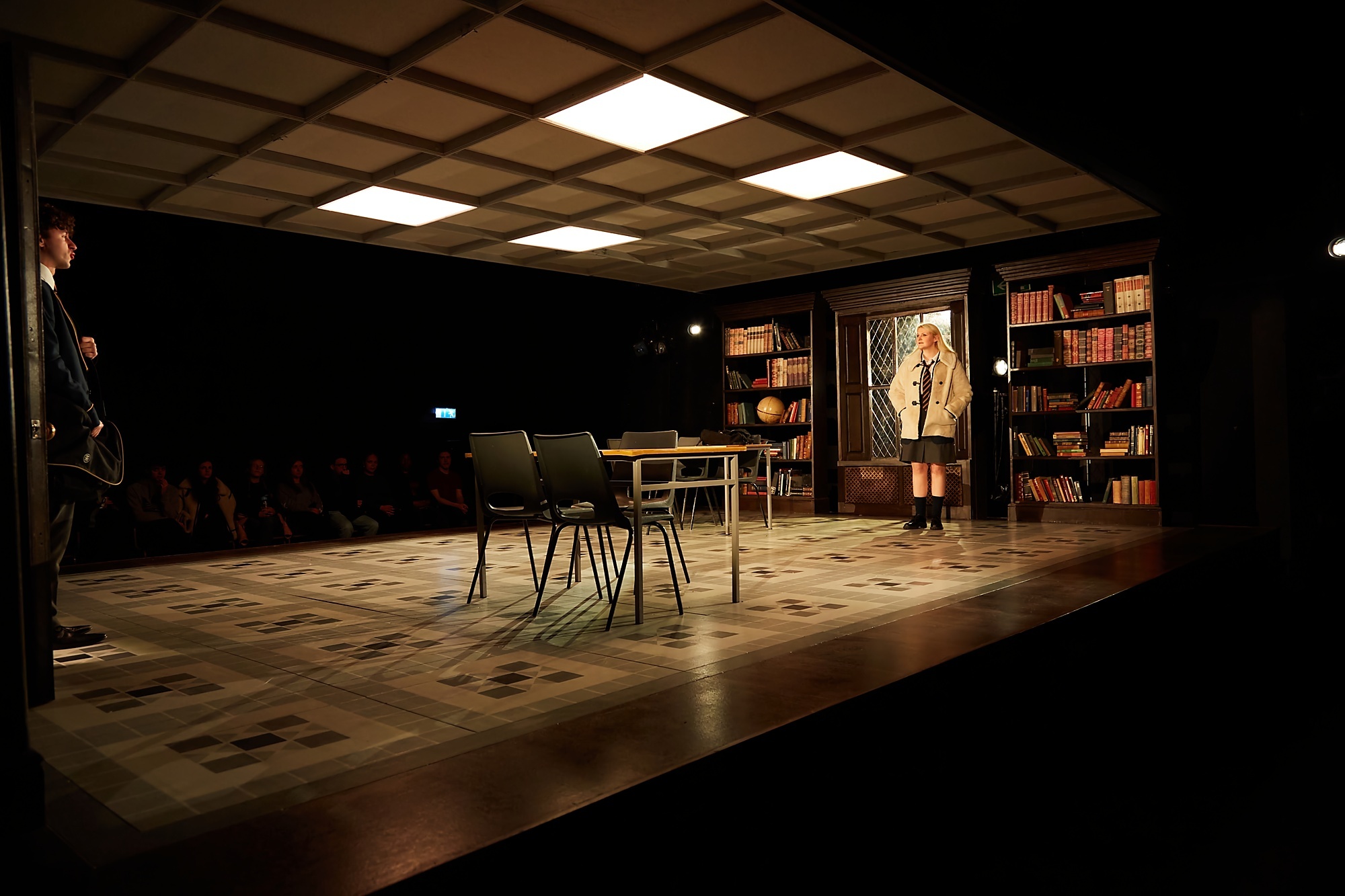
Meet Em, our SMTT student who did a take-over for us to talk about her work on the production. You can see that here.
Also, you can see the finished production below and more in the gallery here.
Read more about the show in an interview about it with director Tom Creed, costume designer Catherine Fay, and acting sustainability manager Sinéad Wallace with The University Times here.
See Sinéad present on this project for the Arts Council here in their session on Climate Action Training | Materials and Procurement for Festivals and Production Companies. She steps in at 39:50.

